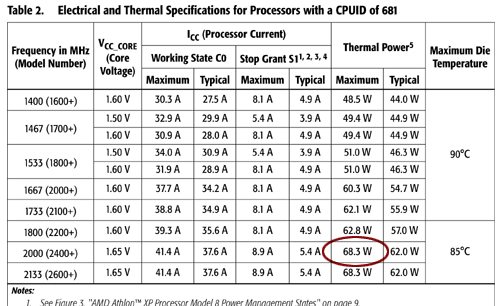After careful consideration I have decided to transfer all hardware review activities to a new domain. I purchased Hardwareasylum.com in 2012 and have been working hard to build a new and improved Ninjalane on that domain. If you are reading this you have reached one of the archived articles, news, projects and/or reviews that were left behind during the site migration.
Please update your bookmarks and be sure to visit the new and improved Ninjalane at Hardwareasylum.com
Thermaltake Silent Boost Review
Author: Dennis Garcia
Published: Sunday, September 14, 2003
Benchmarks
Benchmarks
The Thermaltake Silent Boost is designed for socket processors including Pentium 3 and the entire AMD Athlon line up to 3400+. Here is an overview of the system and testing methodology.
LanParty NFII Ultra
Athlon XP2400+ Tbred (AXDA2400DKV3C)
Thermaltake Silent Boost
CoolerMaster Aero 7+
I used the included BIOS monitoring software to provide temperature information from the system. A simple game of Quake 3 provided the 100% processor usage.
LanParty NFII Ultra
Athlon XP2400+ Tbred (AXDA2400DKV3C)
Thermaltake Silent Boost
CoolerMaster Aero 7+
I used the included BIOS monitoring software to provide temperature information from the system. A simple game of Quake 3 provided the 100% processor usage.
Editors note: Even though the Windows XP task manager reported 100% processor usage we could never attain a 100% of the rated heat output as documented by AMD (see below) when using Quake3 as a basis for that heat production. Knowing this, the game was played until the maximum temperature was attainted and stabilized, or when the round was over.
Other things to consider when judging software induced heat output.
a) Clock throttling by the processor at high temperatures.
b) Normal software isn't designed to produce maximum heat output.
c) Variances of cooling temperature.
d) Variances in CPU load.
e) Inaccuracies in thermal diode readouts.
Of course the list goes on..
My testing methodology is aimed to provide a real world look into this heatsink given the test system provided.
a) Clock throttling by the processor at high temperatures.
b) Normal software isn't designed to produce maximum heat output.
c) Variances of cooling temperature.
d) Variances in CPU load.
e) Inaccuracies in thermal diode readouts.
Of course the list goes on..
My testing methodology is aimed to provide a real world look into this heatsink given the test system provided.


A C/W rating can quickly be calculated using this formula.
C/W = (CPU temp - Ambient temp)/(Variance(%) * CPU Watts)
Allowed variance for this test = 75%
CPU Watts = 68.3W
0.28 C/W = (42C - 27.5C)/(.75(68.3W))
C/W = (CPU temp - Ambient temp)/(Variance(%) * CPU Watts)
Allowed variance for this test = 75%
CPU Watts = 68.3W
0.28 C/W = (42C - 27.5C)/(.75(68.3W))

For this next test we cranked the FSB up to 150Mhz and re-ran the tests. To calculate how the C/W rating has changed we will need to factor in the increased processor
wattage. The formula and constants for this is listed below.
ocC/W = dCPU Watts * (ocMhz / dMhz) * (ocVcore / dVcore)2
ocMhz = 2255
dMhz = 2000
ocVcore = 1.75
dVcore = 1.65
The variance still applies for our C/W calcuation
Allowed variance for this test = 75%
CPU Watts = 86.6W
0.30 C/W = (47C - 27.5C)/(.75(86.6W))
ocC/W = dCPU Watts * (ocMhz / dMhz) * (ocVcore / dVcore)2
ocMhz = 2255
dMhz = 2000
ocVcore = 1.75
dVcore = 1.65
The variance still applies for our C/W calcuation
Allowed variance for this test = 75%
CPU Watts = 86.6W
0.30 C/W = (47C - 27.5C)/(.75(86.6W))
Benchmark Conclusion
One thing that plagues heatsinks is that as the ambient temperature rises their ability to transfer heat from one medium to another is degraded. This is especially troublesome to heatsinks with a higher C/W rating since they tend to become saturated and can no longer dissipate heat efficiently.
Keep in mind this calculation is provided for demonstration purposes only and may not reflect the actual lab tested C/W rating, but I think I'm close
Keep in mind this calculation is provided for demonstration purposes only and may not reflect the actual lab tested C/W rating, but I think I'm close

